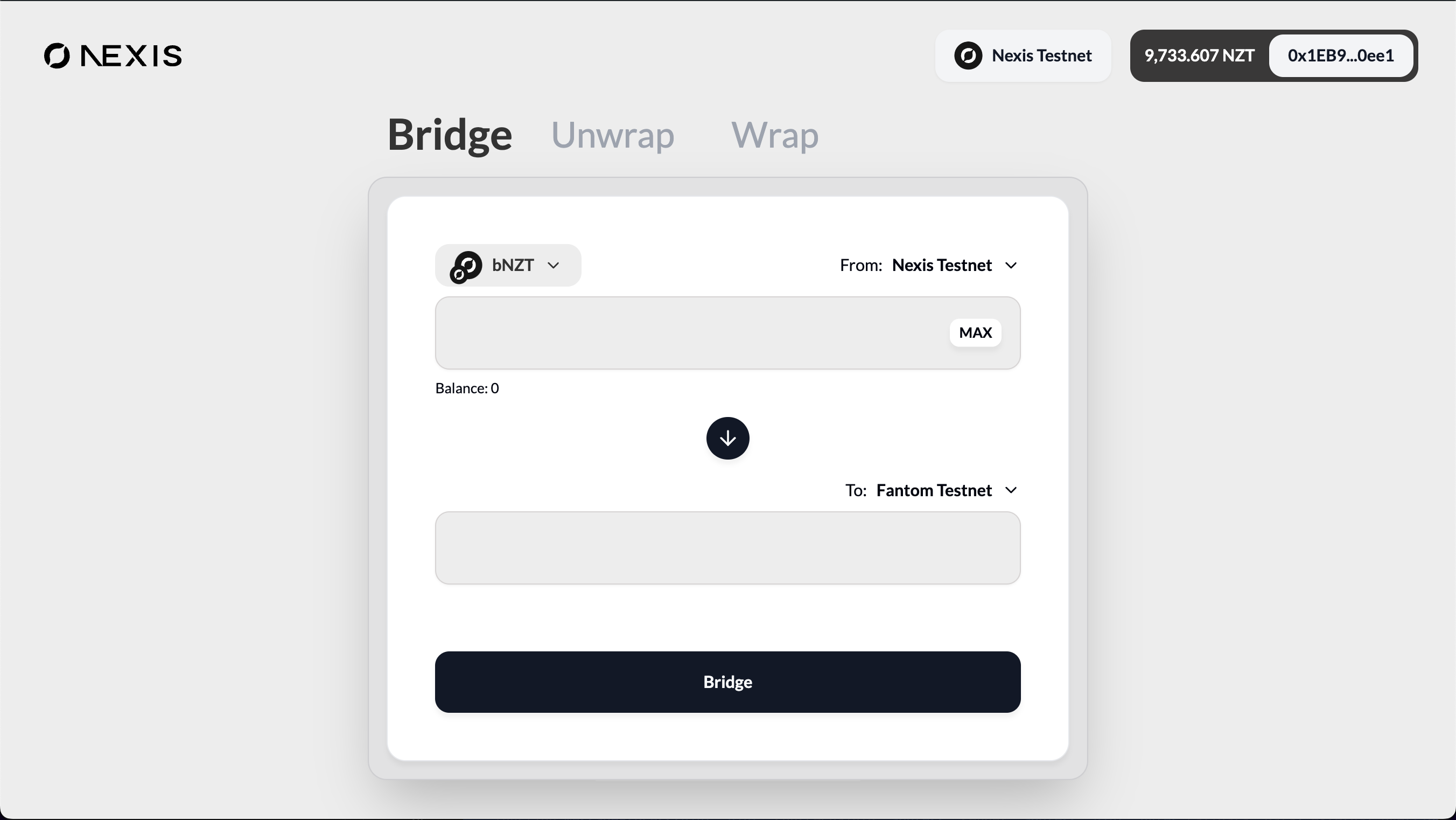Skip to main contentThe Nexis Bridge is a decentralized bridge built on the Nexis network using CryptoLink’s audited smart contracts. It allows users to transfer assets between different blockchain networks securely and efficiently. The Nexis Bridge is implemented as a smart contract on the Nexis network and follows the ERC20 token standard.

Features
-
Cross-Chain Asset Transfer: The Nexis Bridge allows users to transfer assets from the Nexis network to other blockchain networks and vice versa. This enables interoperability between different blockchain ecosystems.
-
Secure and Audited: The smart contracts used in the Nexis Bridge have been audited by CryptoLink, ensuring that they are secure and free from vulnerabilities.
-
Ownership and Control: The owner of the Nexis Bridge smart contract has the ability to mint new tokens on the Nexis network, providing a mechanism for managing the token supply.
-
Burn Functionality: Users can burn their tokens on the Nexis network, reducing the token supply. This feature can be used to permanently remove tokens from circulation.
-
Message Passing: The Nexis Bridge uses message passing to communicate between different blockchain networks. This allows for the transfer of data and assets in a secure and decentralized manner.
Why Bridges are Used
Bridges are used to enable interoperability between different blockchain networks. They allow users to transfer assets and data between networks, expanding the use cases and utility of blockchain technology. Bridges are particularly useful in decentralized finance (DeFi), gaming, and NFT ecosystems, where users may want to interact with assets and applications on multiple networks.
Nexis Bridge Advantages
-
Efficiency: The Nexis Bridge is designed to be efficient, allowing for fast and cost-effective asset transfers between different blockchain networks.
-
Security: The use of audited smart contracts ensures that the Nexis Bridge is secure and reliable, reducing the risk of vulnerabilities and attacks.
-
Decentralization: The Nexis Bridge operates in a decentralized manner, meaning that there is no single point of failure or control. This enhances the security and trustworthiness of the bridge.
-
Scalability: The Nexis Bridge is designed to be scalable, allowing for the transfer of large volumes of assets and data between different blockchain networks.
In conclusion, the Nexis Bridge is a powerful tool that enables interoperability between different blockchain networks. It provides a secure, efficient, and decentralized way to transfer assets and data, opening up new possibilities for decentralized applications and ecosystems. 
